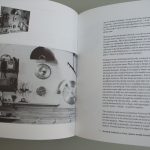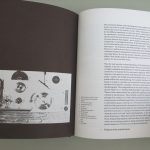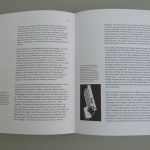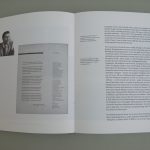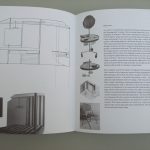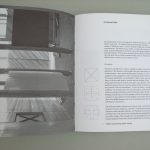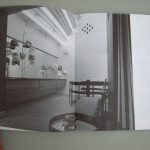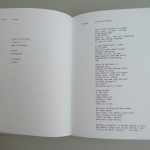The author was a ‘maker’ – in words as well as in materials – and, now that he is dead, this book must be his testament. It is an account of his life and work, assembling particular events and their material outcomes within a large vision of life. It is the work of a believer in material and existential presence, in form, in continuity, in change.
Contents
Introduction
Universals & particulars
The work-station
On academies and workshops [letters]
Well packed or running free? [autobiography]
Matters arising
The kitchen as a place to be
A cottage kitchen
A kitchen in London
Wall furniture
Wall units for production
A bedroom
A student lobby
A small bookshop
A fashion shop [analysis of design work]
On balance and inwardness [letters]
In:quest of Icarus [poems]
Retrospects of love
In:quest of Icarus: the performance
A tribute
Appendices
Acknowledgements
Synopsis
Models & Constructs presents the life and work of the designer and maker Norman Potter, but in a form that is neither conventional autobiography nor a simple design monograph. Potter came of age during the Second World War. In the central essay of this book he describes his progress towards design, particularly through his early involvement in anarchist politics and philosophy (which entailed a spell in Wormwood Scrubs prison). His commitment to the modern movement in design was part of a total life-position: one of separation from the culture of Britain and connection to the European mainland.
In the 1950s Potter was the chief figure in a joinery workshop set up in Corsham (Wiltshire). Handcraft values were applied to machines, to make uncompromisingly modern work. Eventually Potter was asked to teach at the Royal College of Art, thus entering a centre of the British establishment. Here particularly he addressed the need to design for a whole environment rather than just produce isolated pieces of furniture.
In a sequence of shorter essays, Potter discusses this work and its products, both objects and interior spaces. These commentaries invoke the processes of thinking about work and of getting it done, and in this are highly unusual in design literature.
Norman Potter is also a writer. Examples of his work in this field are then reproduced: a verse-sequence for performance, ‘In:quest of Icarus’, and some love poems. A commentary on the ‘Icarus’ piece discusses it as a made – and designed – thing. Here, as throughout the book, Potter breaks down the split between literary and visual, which has been so strong a feature of British culture.
The book is illustrated with previously unpublished images. In this, as well as in its own form, the book constitutes a fresh contribution.
Reviews
In a way, this book is an exercise in self-justification. Half-way through, Potter condenses his experiences into a set of precepts – ‘Start always at zero. Anonymity, Particularity. No truck with taste, style, eclecticism, magazines, picture books’ – which all designers would do well to read before embarking on yet another piece of lucrative mediocrity.
It would, however, be unfair to give the impression that this subtle and beautiful book is simply about one man’s design output and theories. Potter is a poet, even when he is not writing poetry. There are some perceptive digressions on music and particularly concert pianists, a delightful vignette of Ernest Gimson wearing thin white gloves the better to feel the surfaces of a piece of furniture and urging his students to ‘treat their edges kindly’, and some valuable reminiscences of that marginal genius, the typographer Anthony Froshaug. Embedded here, too, is a triangular love affair between Potter, his wife Caroline and his Dominion Universal Woodworker. The Dominion won.
Alastair Best, Blueprint, no. 69, 1990
I was surprised by this book. I’ve known Norman Potter, very slightly, since he arrived at my house one day in the fifties, battered by the wind, having driven from London to Manchester in an open jeep. Since then I half read his book, ‘What is a designer’, which irritated me somewhat, but apart from that I knew little of his work. Now that I’ve read this book, a carefully composed record, almost an epic poem, of his life and his thinking, I see that he is a member of the English artist-moralist tradition, akin to Eric Gill, embodying in his way of doing things a complete conception of life. He is a powerful critic (though barely recognized) of the culture and of the time and is the originator of a design method of great integrity and interest.
This is a very lovely book, a work of hand and machine, a work of thought and dedication. I know of nothing like it.
John Chris Jones, Design Issues, vol. 8, no. 2, 1991

